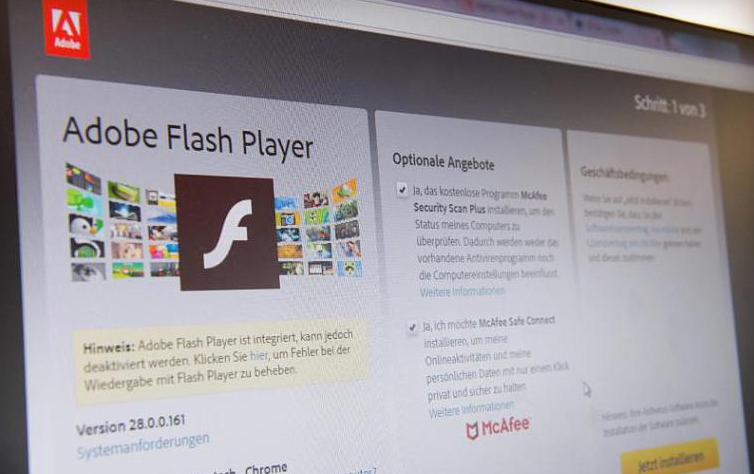
the Flash Player has been working for years on most Windows computers and many Macs. Because of several security holes, experts always advise against doing without. | Picture: Robert Günther HTML 5 Tschö Flash, the successor is already here. Modernly designed websites have been using multimedia content for a long time with the help of HTML 5. | Picture: Robert Günther Jörg Geiger Computer scientist Jörg Geiger works for the journal "Chip". | Picture: Jörg Geiger Ronald Eikenberg Ronald Eikenberg is an editor at the trade magazine.
Videos, animations, games, advertisements - on websites, these things brought Adobe Flash to life for years. Meanwhile, the platform for multimedia content but mainly by constant security patches of talk.
Because Flash is plagued by many security holes and is therefore a popular way for criminals to smuggle malicious software on computers. Time and again, experts, browser manufacturers and institutions like the German Federal Office for Information Security (BSI ) warn against Flash.
"Flash is currently a big security risk because it creates a big room for attacks," says Ronald Eikenberg of the computer magazine "c't". "Therefore, users are better advised not to activate the Flash Player." Especially those who have installed outdated versions of the player is vulnerable. Even visiting a website with manipulated Flash content is in the worst case enough to load harmful software on the computer, to spy on personal data or to abuse the computer for other unfair activities. Also for privacy reasons, you can see Flash critical: so-called Flash cookies allow tracking of users and are difficult to remove. And also the access of flash to webcam and microphone can be regulated only uncomfortably.
Many users encounter Flash primarily as an additional program for a browser - a so-called plug-in. In addition to the already frequently occurring security vulnerabilities, there is another problem here: Not all browsers keep Flash up-to-date by itself. Users always have to stay tuned. But there is another way: "For Google Chrome and Microsoft's browsers, Internet Explorer and Microsoft Edge, this is less explosive," says Ronald Eikenberg. "These browsers automatically update the Flash Player." Windows 10 has Flash on board.
For Apple users, the situation is a bit different: the iPhone, iPad and iPod touch support no Flash at all. And on the company's Mac computers, users need to set up Flash on their own if they want to.
However, Windows and Mac users regularly encounter inconvenience: for example, inadvertent users are immediately pushed into installing additional Flash software.
Luckily, it usually works without Flash. Some browsers already block Flash content in the default settings. "With Google Chrome and Microsoft Edge, most Flash content is blocked first and Firefox can at least turn this feature on," explains Ronald Eikenberg. Also the BSI advises to deactivate such active contents as Flash as standard.
But what if you call a website that does not work without Flash? "If you really have a website that you absolutely want to use and that only exists with Flash, then I would look at the Chrome or a Chrome-based browser," advises computer scientist Jörg Geiger of the magazine "Chip". There you can allow Flash then for this site exceptionally. Microsoft Edge on Windows 10 also offers this feature.
But if so many sites advise against Flash: Why is the software still so common? "Ultimately, you can say that Adobe Flash Player belongs to the Stone Age technology," says Ronald Eikenberg. The successor has long been with HTML 5 and continues to spread. HTML 5 is already being used on many websites for video, audio or dynamic graphics. Youtube, for example, is usable without Flash. Also Jörg Geiger of the "chip" says: "The operators of websites have already switched to HTML5 quite well in recent years, which makes Flash actually superfluous."
So you can easily remove Flash from the calculator? Yes, says Jörg Geiger. Developer Adobe has an uninstall program for download. It can also be downloaded from the download center of "Chip". Special problems - apart from the fact that many a website could not work completely anymore - you do not get it. "Flash is nowadays no longer necessary for most users because it hardly uses modern websites," says Ronald Eikenberg. In any case, Flash, which has been active since the 1990s, no longer has a great future ahead of it. Developer Adobe wants to phase out support for the platform in late 2020.